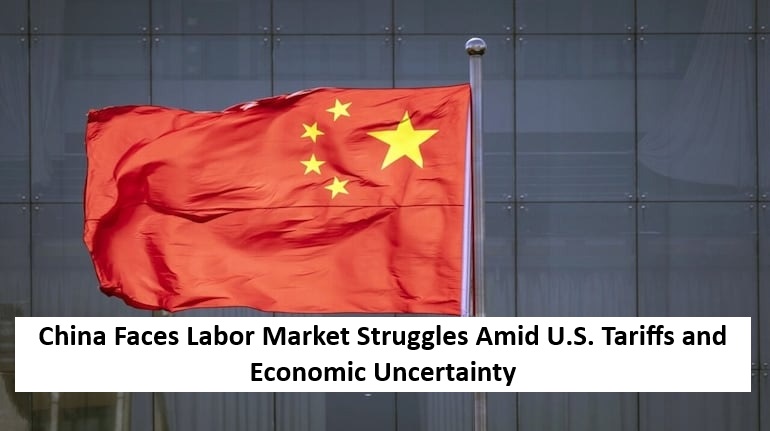
As a result of U.S. tariffs that include a 145% duty on Chinese goods, China is facing increasing economic pressure. Goldman Sachs predicts that these policies may threaten China’s access to the U.S. market and potentially cost up to 20 million jobs, which is around 3% of the working population, due to decreased exports.
These consequences come at a time when China is already suffering from extensive salary cuts and layoffs. The economy managed to grow over 5% in Q1 of 2025, which can be attributed to stimulus measures introduced in late 2024. However, there are still significant challenges in the employment sector.
China’s growth continues to outpace regional peers, but its labor market is increasingly straining. Despite resilient economic growth, a QuantCube Technology job postings index fell nearly 30% year-over-year compared to the last two months. Additionally, the CKGSB expectations index dropped to a six-month low in March.
Some analysts believe hiring pauses stem from a lack of direction in the overall economy. This lack of direction works against Beijing's attempts to stimulate domestic expenditure, which has been a major focus of the government following the prolonged downturn in the property sector.
Domestic Policy Efforts Yield Mixed Outcomes
China's human resources minister, Wang Xiaoping, recognized difficulties both domestically and internationally regarding the 2025 target of adding 12 million urban jobs. While spending on infrastructure and improved business sentiment boosted economic activity during Q1 2025, there were insufficient employment opportunities available.
It is encouraging, however, that optimism in the private sector was boosted by DeepSeek's AI breakthroughs and Jack Ma's recent public entrepreneurial engagements. Morning Consult Intelligence has, however, reported a drop in consumer sentiment, indicating low confidence at the beginning of 2025.
US Markets Tightening Exports Still Bear Risks
QuantCube's data supports the notion that exports are aiding growth; however, their outlook is uncertain. Bloomberg Economics states that a complete trade severance with the US, which bought $525 billion worth of Chinese goods last year, could reduce GDP by up to 3%.
Exports are facing heightened risks as Goldman Sachs revised China's growth forecast for 2025 to 4%, claiming persistent tariff restrictions and sluggish global demand as reasons. Although new US tariffs on smartphones and computers were lifted, the long-term impact of such relief remains questionable.
Need for More Powerful Domestic Boosters Augments
Analysts pointed out that China is likely to increase its attempts at stimulus spending to achieve economic growth. Many still believe further support is still needed to achieve the 5% growth goal. While some sectors like heavy machinery are showing early signs of recovery—excavator sales increased by 29% in March—most straggle.
The central bank of China has so far avoided cutting interest rates or reserve ratios. They appear to have chosen to wait for some time. However, policymakers seem to be shifting towards growth driven by consumer spending, albeit implementation stays quite shallow.
Read More: Two Student Leaders Step Down From Bangladesh Interim Cabinet Before Election

 Share
Share



